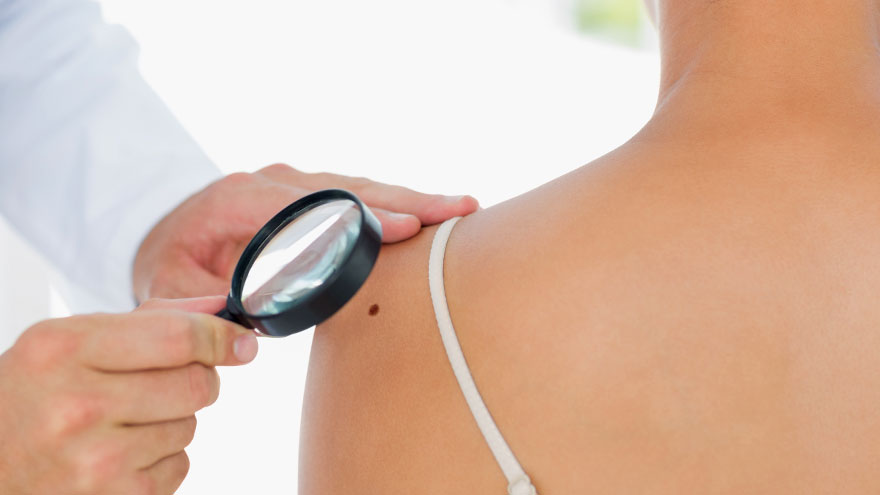Search
Results for 'harvard way'
Clear-
11 Easy Ways to Prep Your Skin for Spring
As we begin to enjoy the springtime weather in northern Nevada, are you finding your skin less than tip-top shape? Here’s how to add moisture back in easy, natural ways. You don’t need to be a medical aesthetician: Dry, cold climates can often wreak havoc on your body’s largest organ — your skin. These tips from Renown Dermatology, Laser & Skin Care will quickly put moisture back and relieve dry, chapped skin. 11 Miraculous Moisturizing Tips Always wear broad-spectrum sunscreen, even during winter months. Don’t forget to use an SPF lip balm, too. Heaters dry out your skin. Use a humidifier to keep moisture in the air. (And try these simple tips to make sure you’re keeping that humidifier clean.) If your skin is dehydrated, try using a nighttime moisturizer during the day. Use a hydrating mask or moisturizing mask twice a week. Don’t forget your hands and feet. Apply a rich cream to the hands and feet at night and cover them with gloves and socks to restore moisture while you sleep. Drink plenty of water to stay hydrated. Try adding a hydrating serum to your morning and nighttime skincare routine to heal the skin. Use a gentle exfoliant to remove dry skin at least once a week, which helps your skin absorb your moisturizer. Apply body oil or lotion in the shower while your skin is still damp to trap moisture. Hot water dries out your skin, so turn down the temperature in the shower and bath. A little pampering goes a long way, and Renown’s medical aestheticians are here to help. Trained in skincare and advanced therapies, our experts can transition your skin to look healthy, youthful and rejuvenated.
-
Learn to Spot Skin Cancer
With skin cancer affecting one in five Americans and 3.5 million new skin cancer cases diagnosed yearly, being proactive about prevention is vital to your health. Dr. Angela Walker, a dermatologist with Renown Dermatology, Laser and Skin Care, explains. The 5 stages of melanoma How should someone examine their skin for moles? I recommend practicing monthly head-to-toe self-examination of your skin, so you can find any new or changing moles or marks that might be cancerous or precancerous. Skin cancer is the most common of all cancers. It is also the easiest to cure if diagnosed and treated early. Therefore, self-examination can alert you to changes in your skin and aid in early skin cancer detection. Self-examination tips: Make sure you have a bright light, full-length mirror, hand mirror and a blow-dryer. Examine your face, especially your nose, lips, mouth and ears, both front and back. Thoroughly inspect your scalp, using a blow-dryer and mirror to expose each section. You might need to get a friend or family member to help. Check your hands carefully: palms and backs, between the fingers and under the fingernails. Continue up the wrists to examine your forearms' front and back. Standing in front of the full-length mirror, begin at the elbows and scan all sides of your upper arms. Don't forget the underarms. Next, focus on the neck, chest and torso. Women should lift their breasts to view the undersides. With your back to the full-length mirror, use the hand mirror to inspect the back of your neck, shoulders, upper back and any part of the back of your upper arms you didn't already check. Scan your lower back, buttocks and backs of both legs. Check the front and sides of both legs, thigh to shin, ankles, tops of feet, between toes and under toenails. Examine the soles of feet and heels.
-
Fall Skincare and Sunscreen Tips
According to the Skin Cancer Foundation, higher altitude increases the risk of sun-induced skin damage. UV radiation exposure rises 4 to 5 percent every 1,000 feet above sea level. In addition, snow reflects up to 80 percent of the UV light from the sun, meaning that you are often hit by the same rays twice. This only increases the risk of damage. If you're among the 58 percent of adult Americans who choose not to wear sunscreen, you may be even less likely to apply sunscreen during the fall and winter. Experts at the William N. Pennington Cancer Institute, explain that exposure to the sun happens when we least expect it, like during our daily commute. The ultraviolet A (UVA) rays can penetrate the windows of your car, office or home and get deep into the dermis, the thickest layer of our skin. So what’s the solution to preventing skin damage — or even worse, skin cancer — in the colder months? Apply, then Re-apply Sunscreen "There are a million sunscreens, so find one that feels good on your skin. Hydrating formulas are great for the drier months, so use a broad spectrum UVA and UVB lotion with a mix of ingredients to ensure you are fully protected." Still not sure which sunscreen to use? Look for the Skin Cancer Foundation Seal of Recommendation next time you’re out shopping for your sun protection products. A good rule of thumb is to use about one ounce (a shot glass full) and re-apply every two hours, or more often if sweating. Also, make sure to: Follow directions and shake the bottle before using. Make sure all skin is covered (including neck, ears and lips). For people with thin or thinning hair, apply to the scalp as well. Carry your favorite bottle of sunscreen with you at all times. Skiers, snowboarders, snowshoers, sledders, snow shovelers and winter enthusiasts take note: When spending time out the snow, we recommend a sport sunscreen with an SPF of at least 30.


